As a sustainable fashion educator, I can tell you that fashion colonialism is key to understanding fast fashion and the current unsustainable practices in the fashion industry. But for me, it’s also personal.
“My sisters only ever wore Arab costumes on the August Harvest Fairs. They went out on the chariots with robes heavily embroidered with golden threads, which they made themselves. But they never wore them in their day-to-day life. Mama Adela didn’t either”, recounted my grandmother, Gaby, about the way her migrant Syrian-Lebanese family had to assimilate into Colombian culture, even in the way they had to dress.
They had to appear elegant in the European way, which signaled status back then. My grandma even got married in a Dior-looking gown one of her sisters made for her, not in a Lebanese dress.
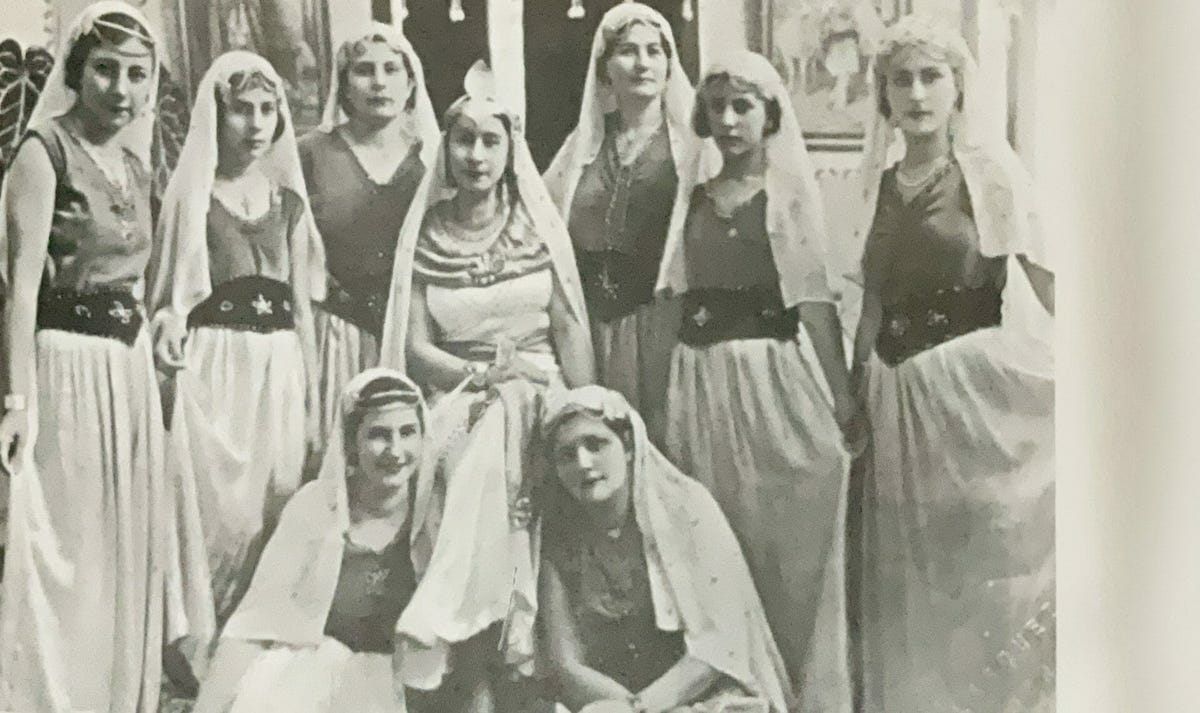
As a fourth-generation Arab-Colombian, I have always been curious about the ways in which our culture has survived or simmered down. I have been trying to piece out what my ancestors had to do to survive as refugees from the war and the hard decisions they had to make so that their children were not ostracised.
Today, my grandmother wears the robes she bought on a trip to Lebanon, Jordan, and Syria, on her birthday, even though her parents never got to. This is how she resists.
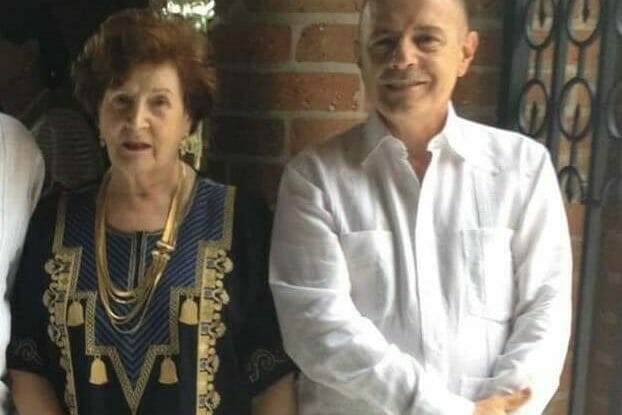
The above story is one of the ways in which fashion colonialism has affected me. But there are also ways in which, I too, am a part of the problem.
You see, I may be a queer neurodivergent person from the Global South, but I am also a white-passing, college-educated woman, taking up space in the sustainability media conversation. According to Dominique Drakeford, in the series The Root, the sustainability conversation has been heavily overtaken by white women.
Not only that, as I have learned from Cèlinne Semaan, founder of Slow Factory, sustainability, and regenerative knowledge are concepts and practices deeply rooted in the wisdom of Global South and Indigenous folk, who are rarely credited or invited to the table of the heavily publicized sustainability conferences or scientific papers on subjects such as circularity.
So to explain what colonialism is, and why it is at the root of the global climate and social issues we face today, I will cite the works of Global South black, brown, and Indigenous peoples that have been doing the work to unpack the history of pillaging and oppression woven into our clothes. I will also bring in their work to talk about how BIPOC people have practiced resistance, resilience, and love for land and craft.
Therein lay the tools we need to survive this systemic emergency. We must listen to them and act.
What is Colonialism?

According to Cèline Semaan, “Colonialism is a question of exploiting across geographies. Its roots are in setting up colonies to extract resources and labor.”
It rests upon three pillars that condition us to keep being oppressed: public policy, which controls access; education, which is in charge of information and practices; and marketing, which molds our perception, explained by Dominique Drakeford.
Writer Aja Barber, in her book Consumed, traces the issues we face in the fashion industry of consumerism and climate change, back to such colonialism. She explains that fashion colonialism is intrinsically linked to racism and the slave trade, both of which are woven into the fabric of how the fashion industry came to be, and are still present in the system today.
What is the History of Colonialism?
When we think of colonialism, we usually picture Columbus arriving in America, but according to Cèline Semaan of The Slow Factory, the origins of colonialist ideology and practice can be traced way back, going all the way to the Greek and Roman empires and even some tribes that before that were colonizing one another.
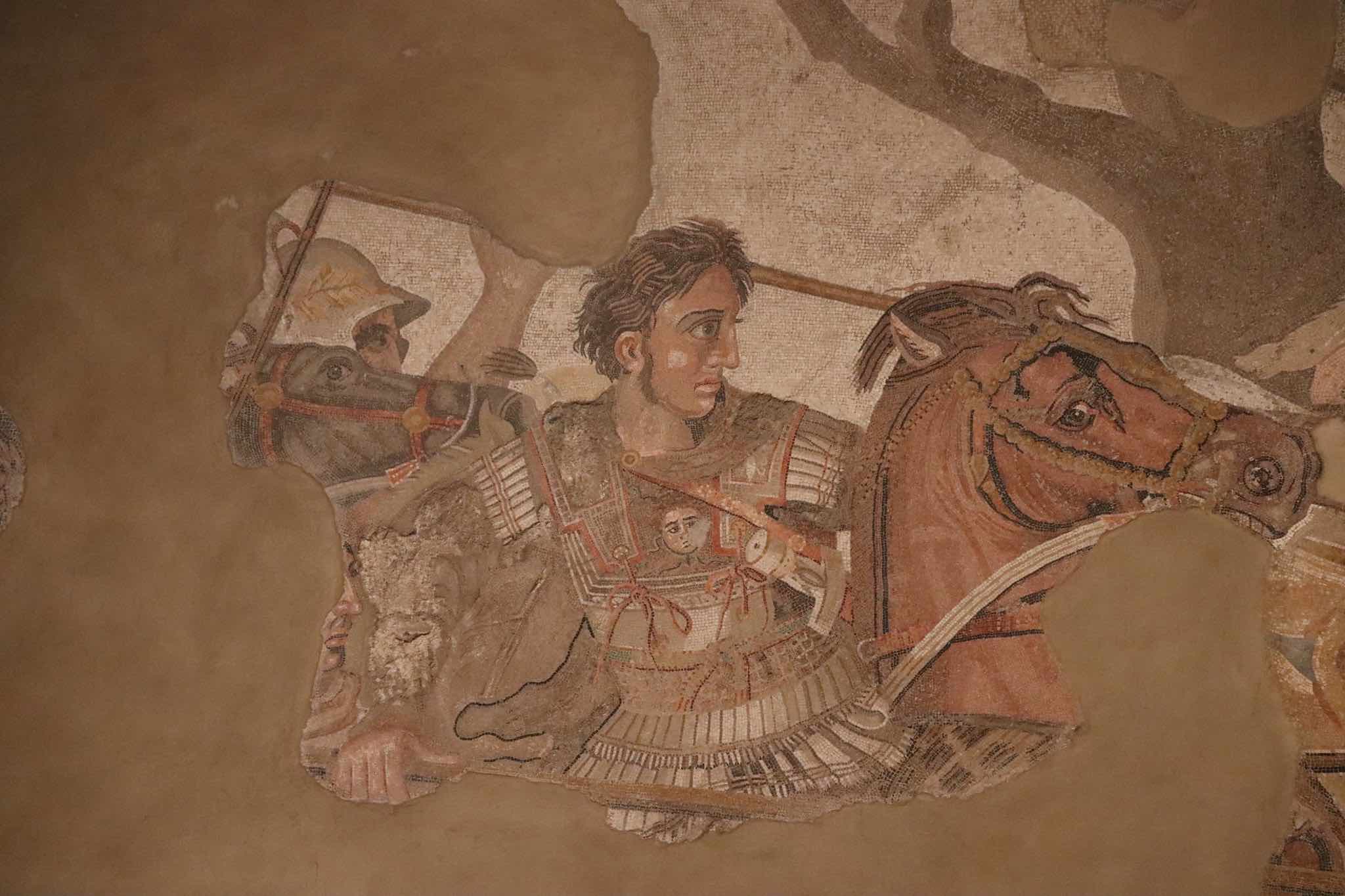
If you flip a garment and look at its labels, as Aja Barber explains, chances are that it was made in traditionally pillaged nations and continents from the Global South, like Bangladesh. Places that are resource rich in raw materials that are profitable for the Global North, spaces that had their own flourishing industries and creators, that were subjugated in order to become the extracting ground for the North’s unsustainable way of life.
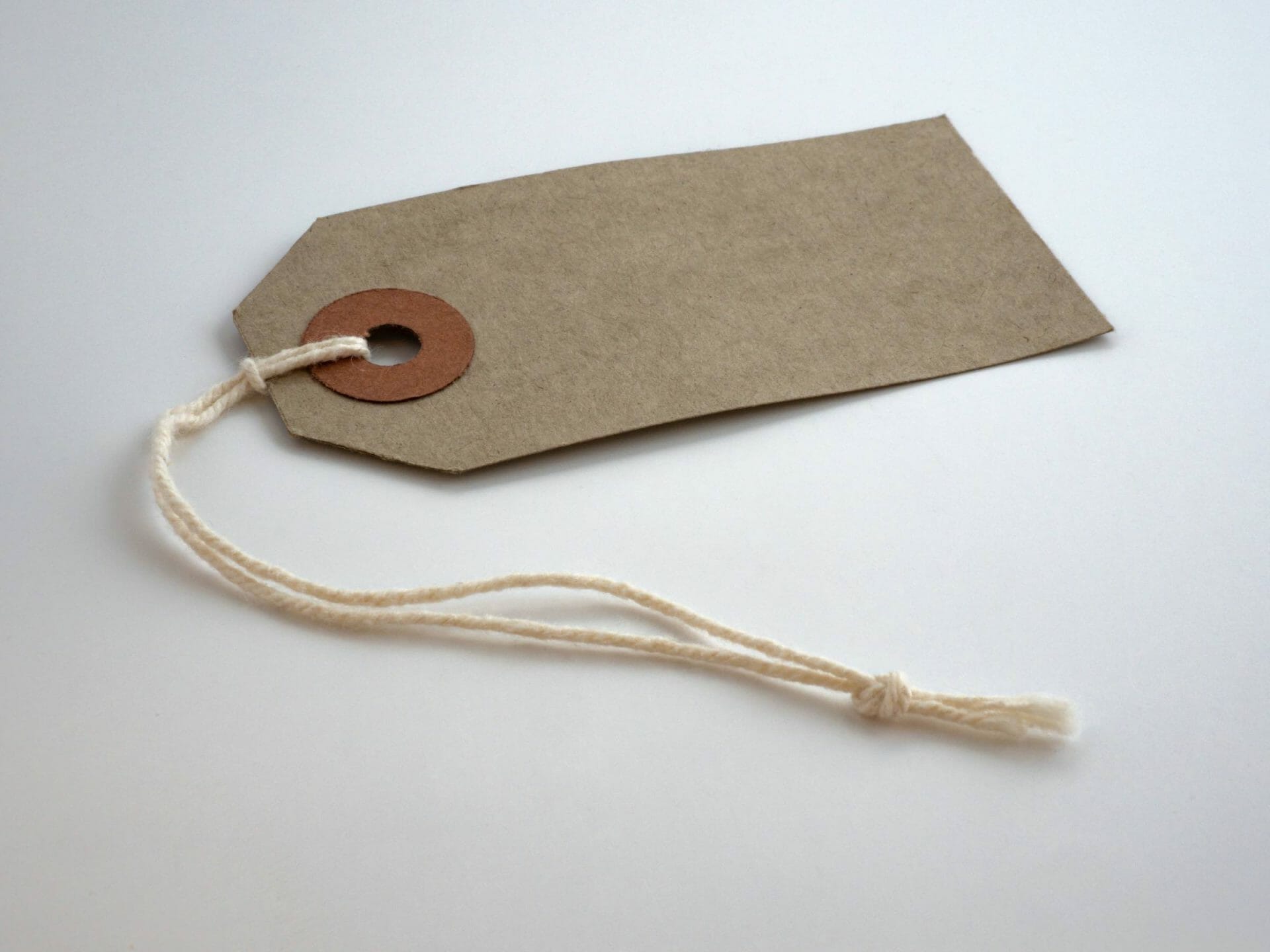
Indeed, reading the diaries of Christopher Colombus for a Colonial Literature class, we realized that the reason he described nature in the Americas in a hyperbolic, buoyant style was to show Queen Isabel that these were resource rich lands the Spanish empire could accumulate wealth with. Describing the Global South as Exotic is and has always been a tactic of cultural colonization, of which fashion is still one of its most powerful tools.

You see, in order to justify oppressing whole nations and their people, colonizers needed a narrative, one that would allow them to differentiate themselves as white men from the black, brown, and indigenous people already in the territories they wanted to extract from.
They made people of the Global South into the Other: not a rational human, but strong animals or docile beings, as Edward Said explains. And they made themselves into the heroes so that colonization was, as Céline Semaan recounts, “an extension of civilization.” A way to bring “enlightenment” and “development” to “savages.”
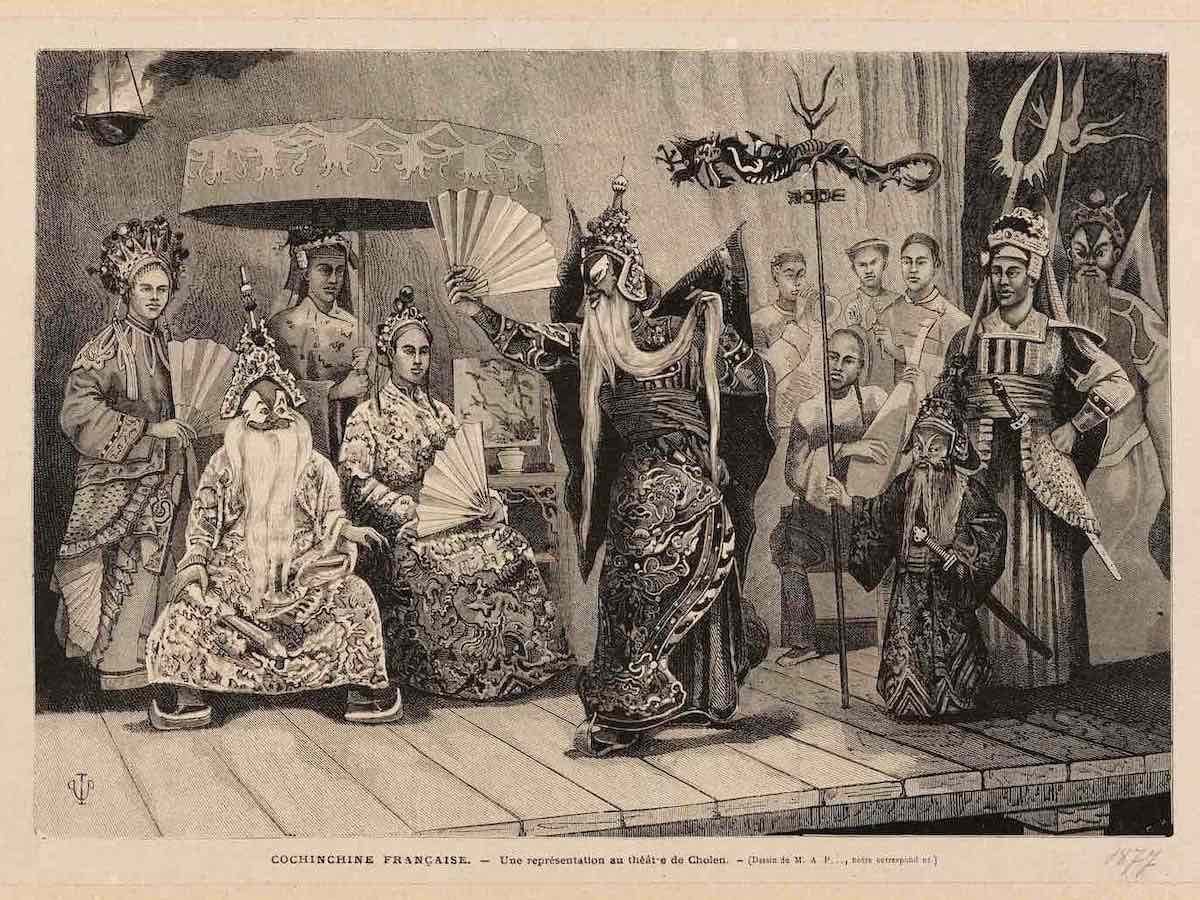
As indigenous academic and media maker Nikki Sánchez said in the series The Root, Europeans did not come to America to bring freedom, rationality, and technology. They came to escape famine, sickness, and economic systems that were so unsustainable that they had already bankrupted their own countries.

And, in fact, there existed networks that extended across the Americas, Asia, and Africa, that predated the colonization of the “New World.” This prior contact was reciprocal, not based on land theft or enslavement.
There was indeed a transatlantic trade before the Europeans came and they got this knowledge from Africa. There they also learned about the Americas and India from an African context and knowledge. With it, they used these pre-existing routes to enrich themselves, according to Lisa Betty, a History Ph.D. candidate at Fordham University.
The existence of these previous trades is only one proof of how black, brown, and indigenous people of the Global South had flourishing civilizations, and empires, before the Europeans arrived. The Incas in Perú, The Mexicas in Mexico, the silk and cotton empire in India, and the flourishing production of Indigo in West Africa are testimony of it.

While living in the territory they had a much more harmonious relationship with the land. For indigenous, Afro-indigenous and Caribbean people, the land meant healing, intentionality, and connection.
Whereas the Europeans brought about the transactional relationship with land we now have and which has depleted our soil and our planet as a whole. A relationship built on the brutal forced migration of the local folk, exhile, assimilation, and forced labor.

The colonial case of India is especially important as it clearly outlines the link between fashion and colonialism. Feminist activist Swatee Deepak explains that the purpose of the British East Company was to break the Indian Textile Trade. It was the largest one in the world at the time and so to take away India’s global power, the British exploited their community and extracted its natural resources.
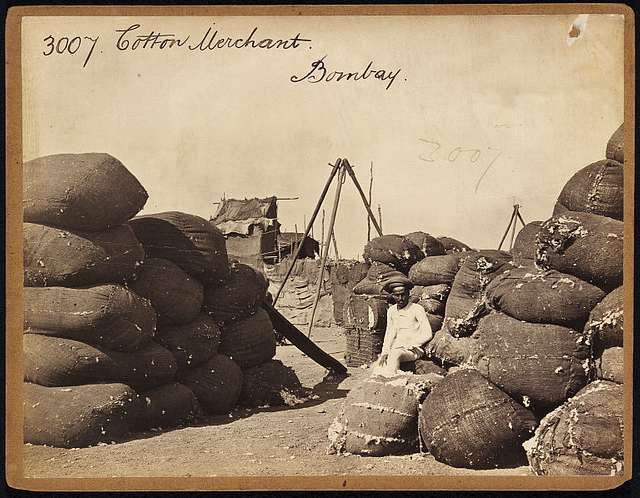
In her book Consumed, Aja Barber cites an article in The Guardian where they recount how the “British cloth manufacturers conspired to cut off the fingers of Bengali weavers and break their looms.” They even imposed taxes on the textile craft so India could never recover.
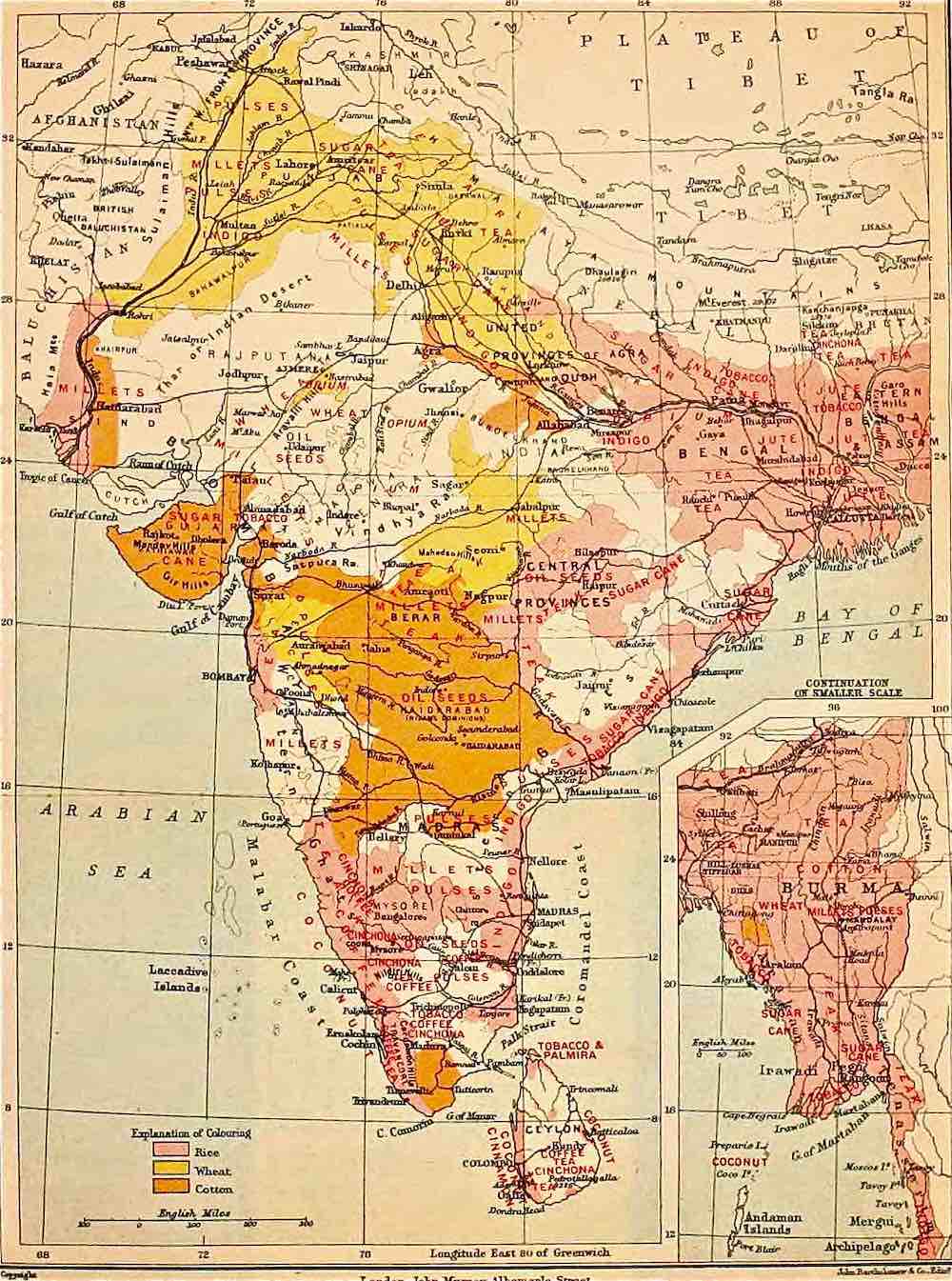
In the United States, the story is not much better. To satisfy the “white gold” craze of European Countries, in the preindustrial period, picking cotton remained a labor-intensive process that meant having tons of hands doing so and large plots of land to cultivate the cotton. Enter the USA.
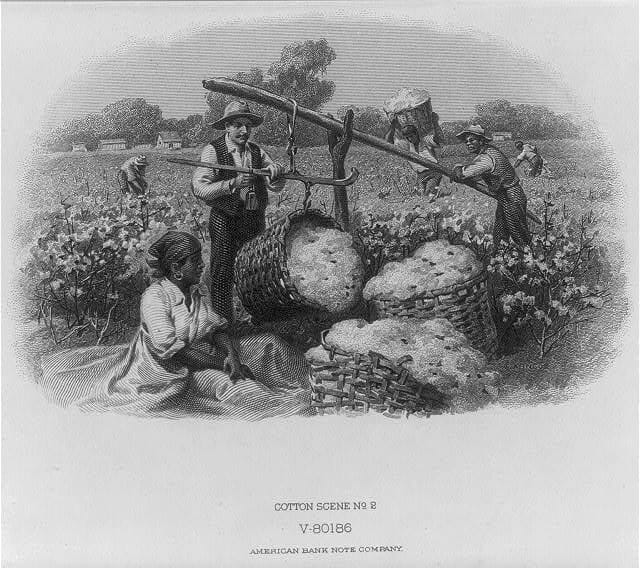
Maxine Bedat, in her book Unraveled, briefly recounts the ties between cotton and racial socioeconomic inequality in the country. The need for extensive land for cotton growing and an increasing number of cotton pickers turned into the forced displacement of indigenous people and enslaved African folk. Of the 3.2 million people enslaved in the fields, in 1850, 1.8 million worked the cotton fields.
The industrialized ginning process was also stolen, as were the people and the land. It was Eli Whitney who patented it, only because African enslaved people were not allowed to hold patent rights. Historians now believe it was uncredited African slaves who made the machine that accelerated the cotton trade.
The cotton industry was also where the first workplace management forms were established. Slaveholders kept track of the workers’ performance and valued them based on it. Turning them into machines, which is not far from our current exploitative pay-per-piece model.
As Maxine explains, even though slavery has been abolished “the exploitation of labor and land still continues,” it is still rampant in the fashion industry. And we can no longer turn a blind eye.
What do Fashion and Culture Have to do with Colonialism?
I’m short, everything. In order for the colonizer to expand its web of power, it needed tools and ideologies, which Cèline Semaan says are religion, media, and fashion.
Clothing being our second skin, our first frontier, our home, was a prime technology of the self to strip people of their own identity and make them fit into some “universal” standard of what is considered to be right, beautiful, and tasteful.
It was and still is a territory of dispute where we leave traces of our story, of who we are, have been, and wish to be. To take that away, to deem your wardrobe, that of your people, your ancestors’ story as wrong, and even in some cases illegal to wear, is a violent and perfect tactic to ideologically expand colonialism and try to break the spirit of the people.
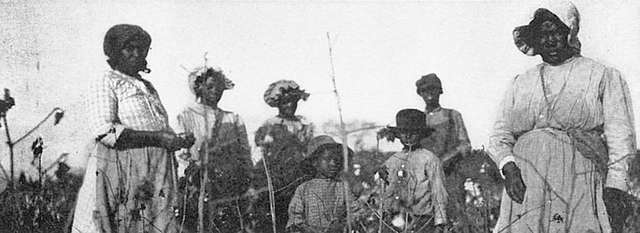
Aja Barber explains in her book that clothing was also a tool for social distinction reinforcement for African slaves. In New Orleans, according to Lisa Betty, wearing a head wrap was enforced by law to cover Afro-indigenous hair.
It was thought to be unruly and primitive, too flamboyant or kinky. Something we are reckoning with still to this day with the phrase I have also heard people say, in Colombia, when people have curly hair: “you have bad hair.”
Cèline Semaan calls this phenomenon oppressive aesthetics. It is the way in which universalism has been applied to the sphere of fashion, beauty, and design. It is no accident that in the West we praise the “basics” and the minimalist aesthetic. “With the idea of being modern,” she says, “we were subjugated into this monocultural stream of how we are supposed to look.”
I suffered from this as a kid having an Arabic unibrow. I plucked my eyebrows until the age of 29 because it was considered unseemly. My curly hair was also an issue in a Colombian town whose aesthetics were influenced by narco history. All girls and women wanted to have straight, long, blond hair.
This power of homogenizing wielded through fashion is more extreme and obvious since the development of blogs, Instagram, and TikTok as spaces of taste dictation. You can see images of people from two sides of the world, looking the same: cottage-core or minimal, for example.
Fashion and Colonialism Today
“Nearly all multi-million/billion dollar global brands have adopted principles and practices of slave-based labor primarily toward skilled BIPOC women throughout their supply chain […] these are the same brands that acquired their ‘generational wealth’ from a long history of Black slave labor.”
-Dominique Drakeford, quoted in the book Consumed.
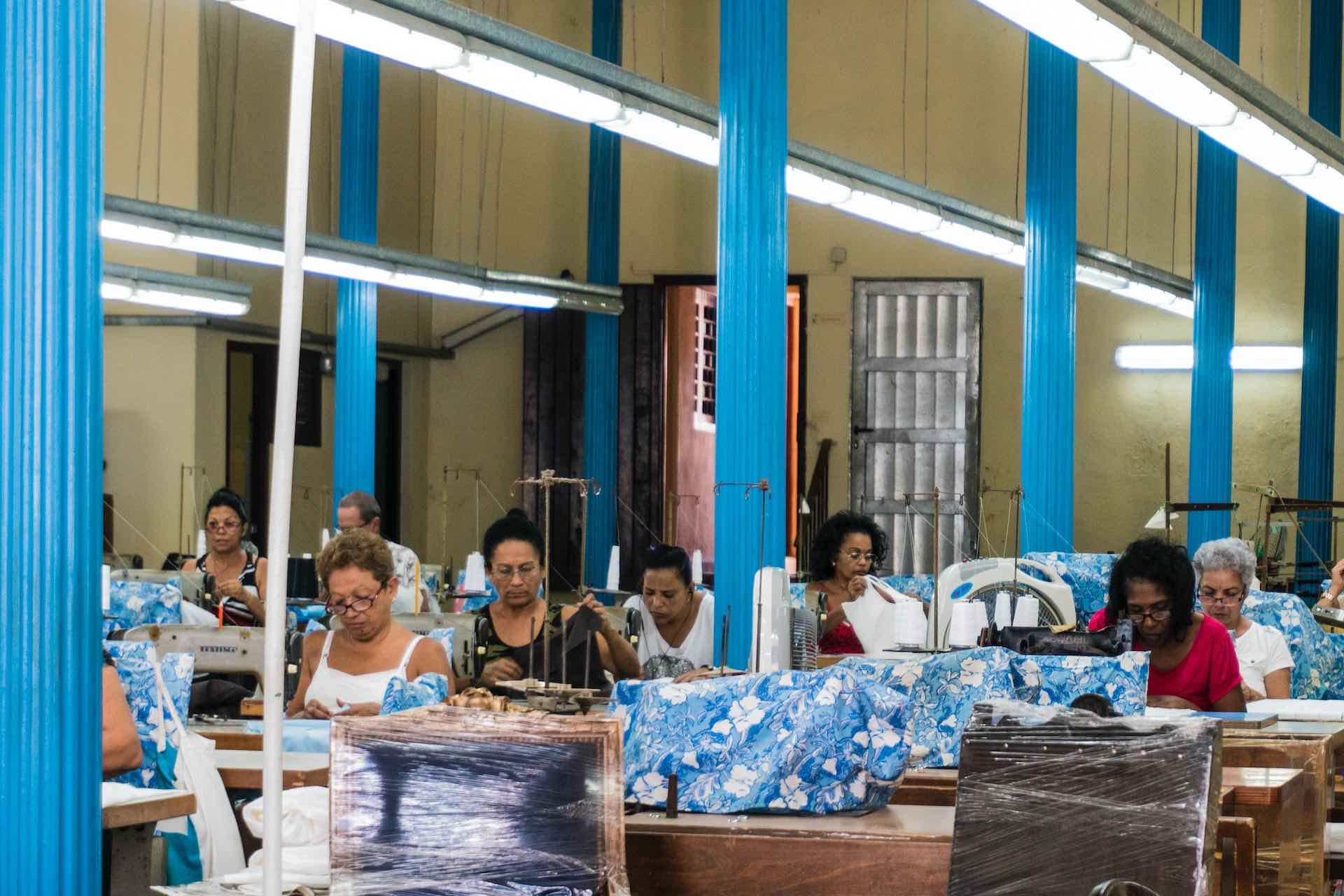
Global brands are still, in 2023, going abroad to the Global South with the excuse that they are giving jobs to marginalized communities that “would be worse off without those jobs,” only because of the cheap labor and tax exemptions.
Not content with pillaging resources and labor, the waste these brands make with their overproduction is also ending up in landfills in marginalized countries: Kantamanto, in Ghana; the Atacama desert, in Argentina; the border between México and the US.

These are just a few examples of how the Global North is exporting the problem, hence the climate and social consequences of its overproduction and consumption. Not only that, brands keep copying the cultural symbols, techniques, and heritage of BIPOC people.
Fast fashion is the ultimate example of that.
Is Fast Fashion a Colonial Issue?
Oppressive aesthetics can be traced all the way back from colonialism, through to the Trans-Atlantic Slave Trade, to the use of underpaid and harassed garment worker labor in Asia and the Global South. It can be traced all the way to fast fashion, which ends up in a massive distribution of clothes we do not need.
Fast fashion is, indeed, the culmination and evolution of the colonialist extractivist model. It is a way of doing business in which trendy styles are produced at increasingly higher speeds, in astronomical quantities, and in a disposable quality, for low prices. Fast fashion is promoted with the excuse of democratizing fashion and filling a consumer’s “need” to constantly buy new clothes.
Fast fashion feeds on this colonial narrative that the Global South has infinite resources for the Global North to profit from. Indeed, 92% of water and 85% of the raw materials used to produce new clothes in the EU are actually extracted from other regions of the world that are traditionally pillaged countries.

Its consequences are also far-reaching for the people involved in their clothing production and for our planet. Negative impacts include worker harassment, diseases due to toxic chemical use, poverty, wage theft, increased greenhouse gas emissions, biodiversity loss, as well as resource and soil depletion.
And when I say infinite resources I don’t just mean natural ones, I mean people too. A system that was established on the back of enslaved and marginalized communities is still standing on their necks.
You see, if you map out the trade routes of colonial rule it is almost the same as the route our clothes travel. They are made in terrible conditions by BIPOC women garment workers of the global south.
Garment workers continue to suffer from modern slavery, earning 4% of the garments’ retail price, which amounted to $4 USD per day in Bangladesh in 2021. Women garment workers are still sexually or otherwise harassed, and have to work under unlivable conditions only to sometimes be told that they will not get paid due to order cancellations.
We may think this system of wild oppression in the name of infinite capital accumulation is new, but it is not. It is the result of centuries of colonialism on which the fashion industry itself was built in the first place.
Not only is it colonial in its practices, but also in its designs. Brands like SHEIN, for example, have been accused of copying and selling Mexican indigenous designs on their website.
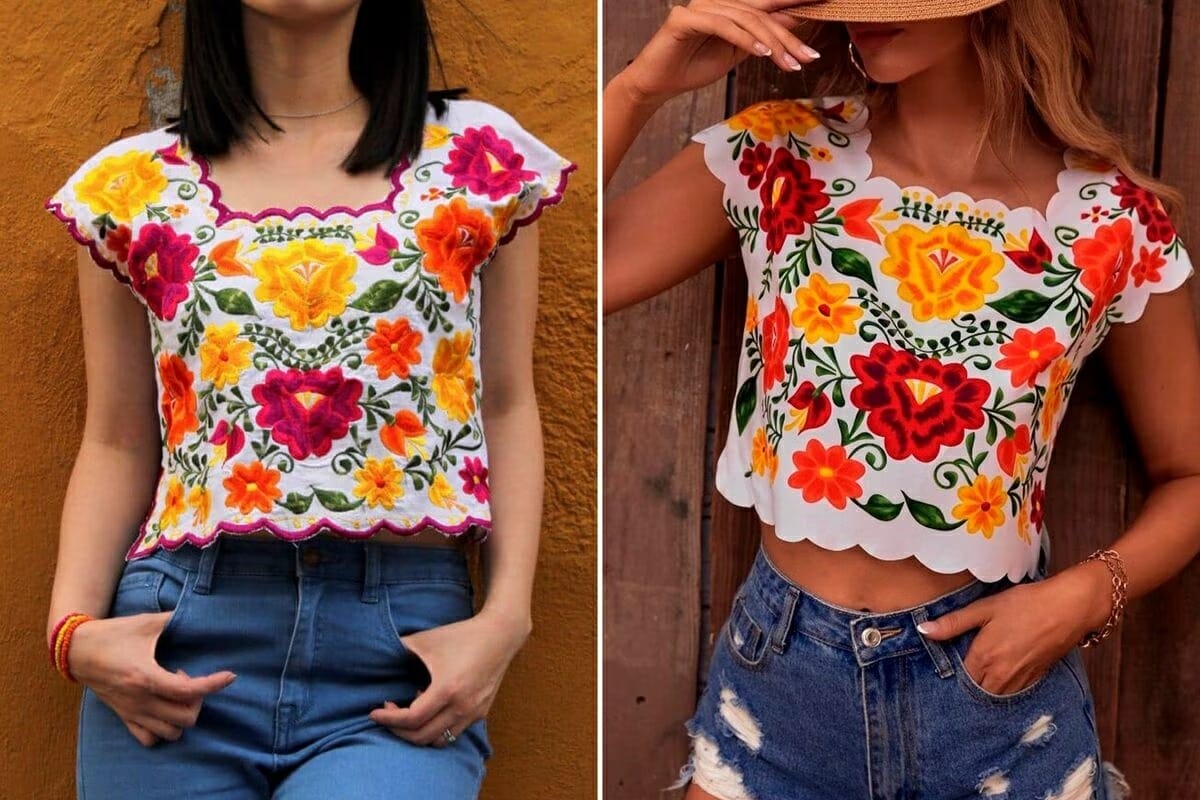
Cultural Appropriation and Eurocentric Standards
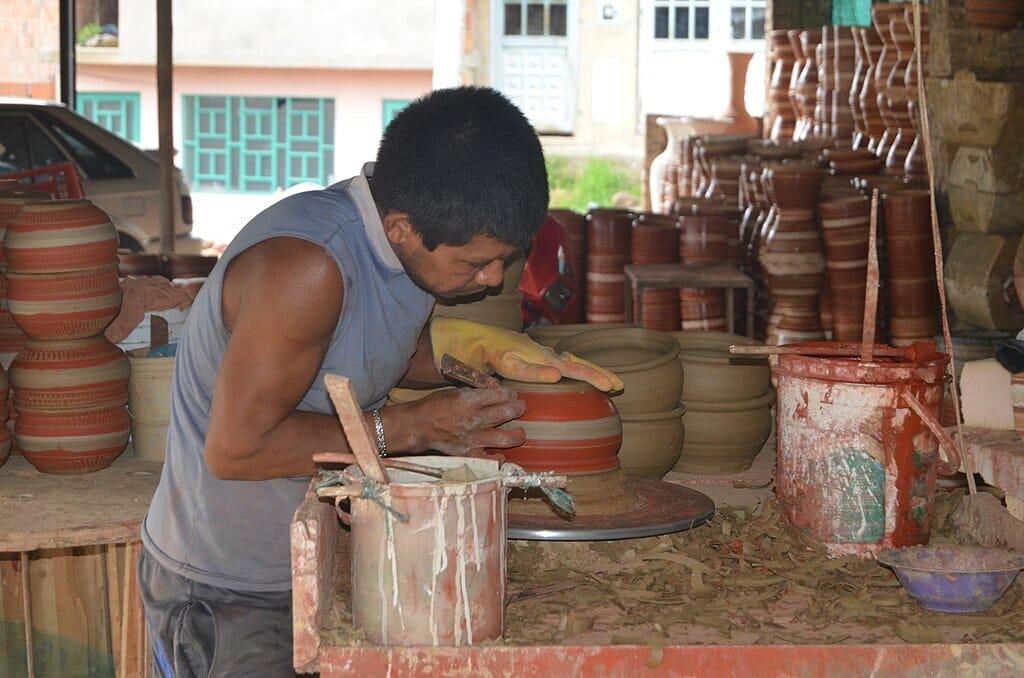
In Colombia, it is not uncommon to see artisans selling their crafts on the streets, as well as at yearly fairs. And when I have approached them to buy something I always come against a practice that is very naturalized: haggling the artisan’s price. This I have always found confounding and disrespectful.
A Wayuu woman will take months to make a traditional bag or mochila by hand, embedded with her story and her ancestors’ story. If people don’t haggle in a Chanel store, why do they haggle the price of an artisanal garment?
The answer is, of course, a colonial mindset. As a colonized nation, we have been indoctrinated to see what’s ours as less valuable than things that are made abroad. We have been taught to look down on artisans, especially BIPOC ones, and are only now, since around five years ago, starting to change the narrative.
This disrespect comes in many forms, not just in haggling but also in appropriating what is their collective indigenous and Afro cultural and textile heritage for a white designer’s profit or a white person’s usage.
Nikki Sánchez spoke about this issue in The Root and why it is so hurtful and violent for the people of the communities that are subjected to cultural appropriation. It is because of a narrative that I have seen play out in Colombia as well, that indigenous and Afro-Indigenous people are static and therefore should stay and dress the same. This narrative also makes people think that it is okay to wear a headdress to a festival because indigenous folk are extinct or don’t matter.
In this context, Nikki says that indigenous people have to navigate that white people want to “wear our clothing, and steal our property and designs, while simultaneously telling us we no longer exist, the violence that is foundational to that worldview is why we cannot tolerate it. We will not be your animal or mythological creature.”
She talks about the example of the Mayan Huipil. In these garments, woven by their elders, and inherited from their mothers, aunts, or friends, lay their genealogy, their culture, and instructions for how to live a good and harmonious life. They encapsulate their elder’s prayers and protection and a reminder of who they are, where they come from, why they are here, and where they are going.
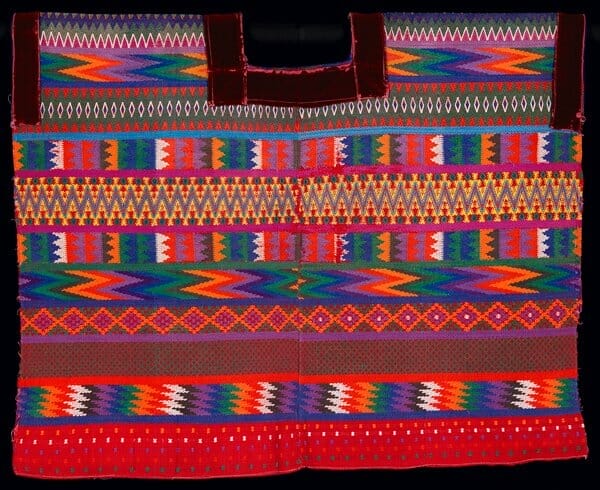
And during the colonization period in Canada, they made them wear huipiles of specific colors, based on the regions they were from. A strategy colonizers used so keep track of them. Now, when Nikki sees someone wearing a certain color huipil, she knows where they are from and who their ancestors are.
So to see a white woman wearing a thrifted huipil, in willful ignorance of their struggles, when they were oppressed for it and with it, makes no sense. Neither does seeing it be ripped off by fast fashion or designer brands that give no credit or profit to the communities where the work comes from.
In my hometown in Pereira a swimwear designer used indigenous creations to compliment her collection called “Ancestras.” They were made by the Embera Chamí indigenous community. This community comprises at least 77,000 people in Colombia and most of the ones that live in Pereira, Risaralda, have been displaced from their ancestral lands.
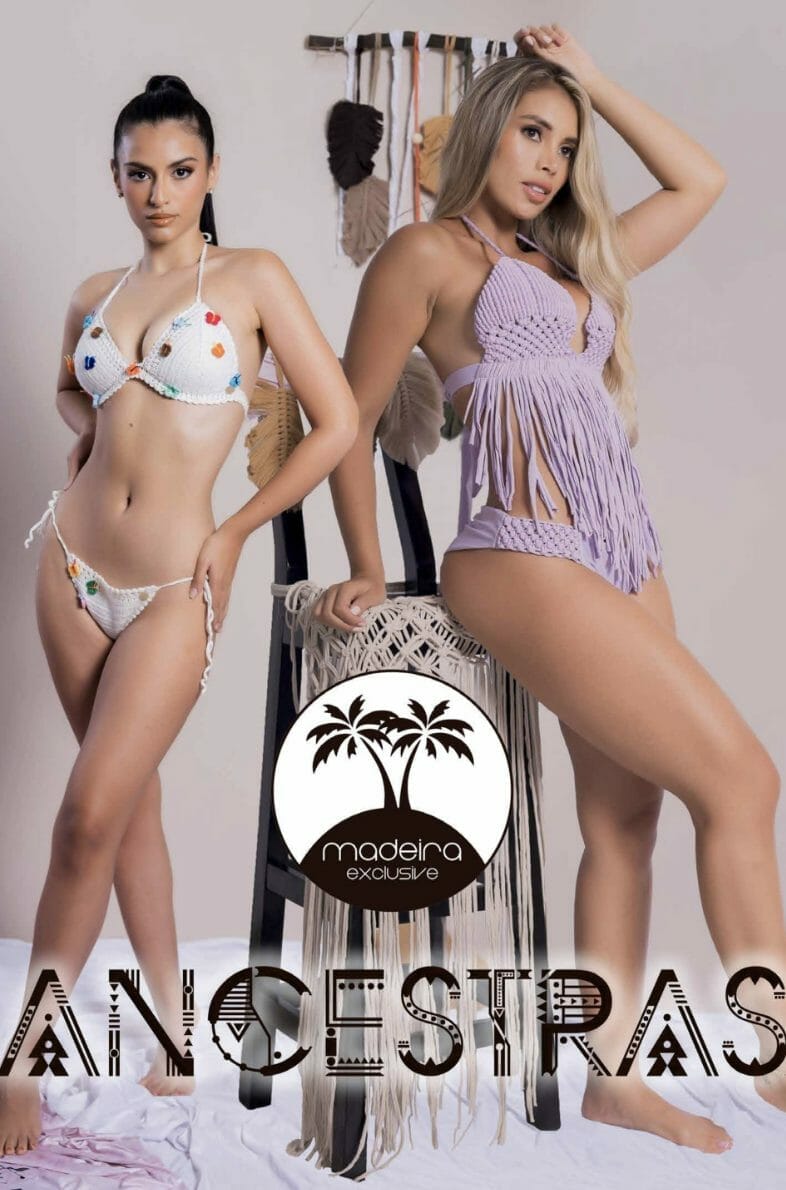
The cultural appropriation and violence, in this case, was in the usage of their garments as a literal accessory to someone else’s vision, instead of co-creating with the community. The designer and her PR team put two indigenous women, one of them carrying a baby, in the middle of the runway, silent as mannequins. These women were mere accessories themselves.
Finally, when you look at the catalogue of the collection, they use graphic elements from another indigenous community from El Valle de Sibundoy, the chumbe. This is a sash worn around the waist that the expert weavers of the community, mostly women, make.
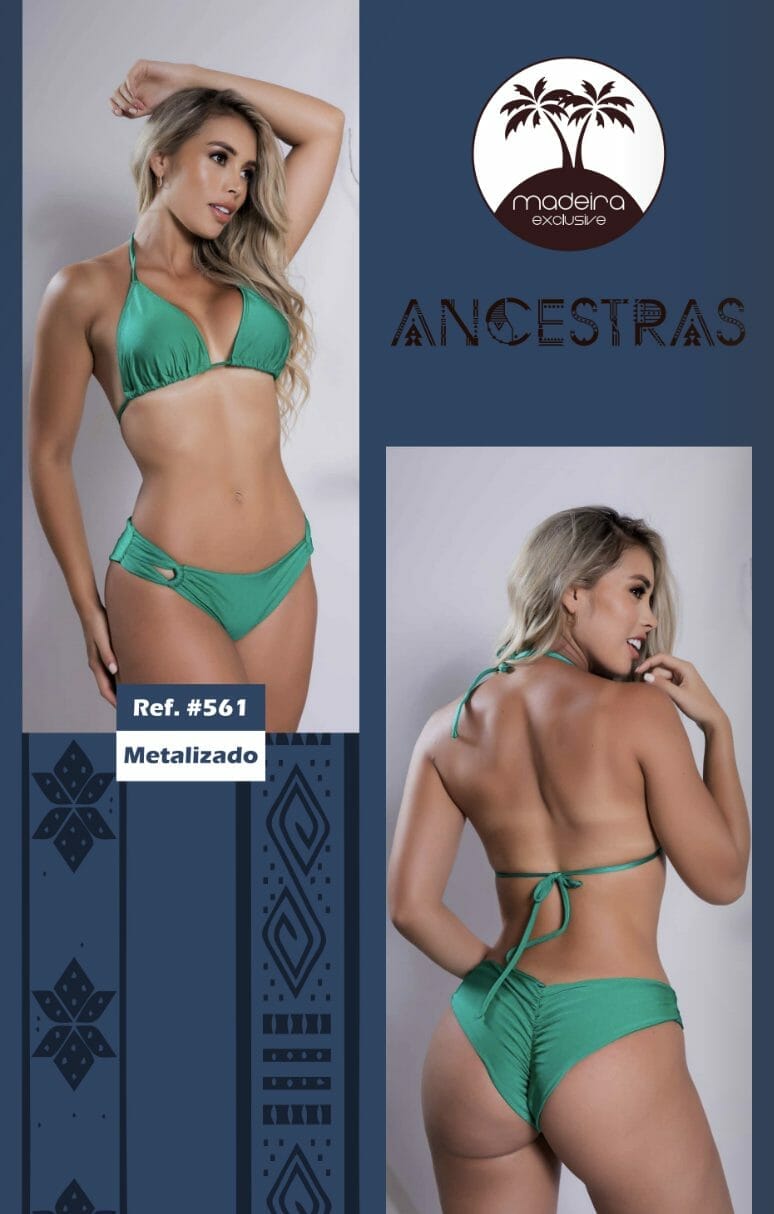
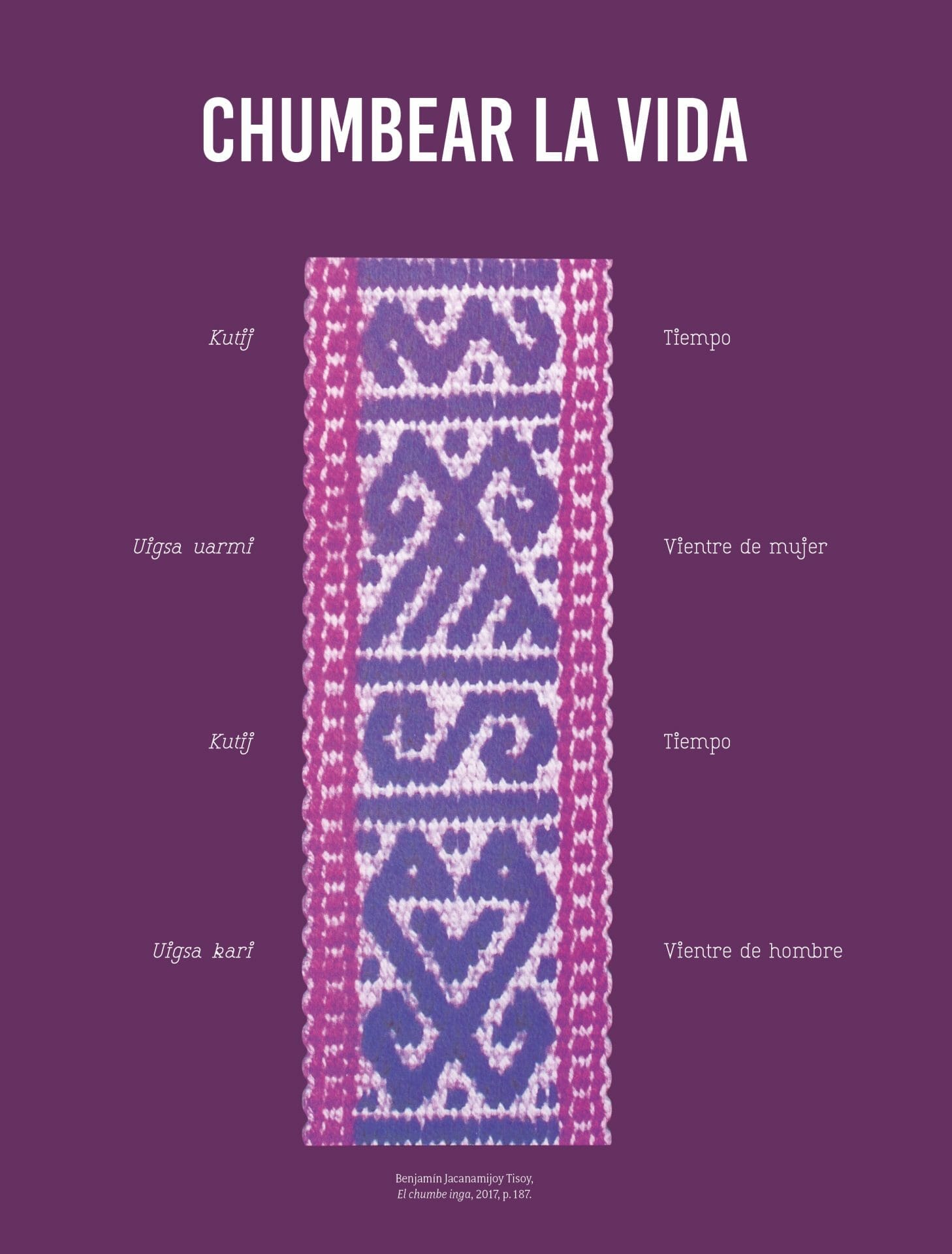
These have been defined woven thought, each symbol and color with a deep meaning. Some are, for example, describing their concept of time. In the swimwear brand’s catalog, they are using these designs as a decorative frieze. Again, an indigenous element, with deep spiritual meaning, used as mere background decoration.
When asked why she used indigenous models and elements in such a disrespectful way, the brand owner said she was doing an homage to the communities. Not questioning whether they wanted homage in the first place or how deeply colonial it was to exoticize them, use them as props for their marketing, and use their image to sell more.
This is an example of cultural appropriation and a continuum of colonialism because, as Eduard Salazar, Colombian LGTQ+ sociologist and PHD candidate explained to me, this brand is extracting the community’s knowledge and craft to style their pieces, while also using the indigenous women’s bodies and their traditional dress as dehumanized objects for its own profit.
He told me about how Colombian fashion has always been colonialist and how the continuum of colonialism in our history and lived experience is seen in our bodies, in what we wear in the designs and campaigns of big and small brands like the swimwear one or a lifestyle one that glorified slavery as a way to publicize its garments.
“Lots of brands still do this in their communications,” he said, “and one went so far as to do a coffee table book (the tool of travel colonialism) ‘showing Colombia’, but reducing it to its Caribbean exotic representation.”
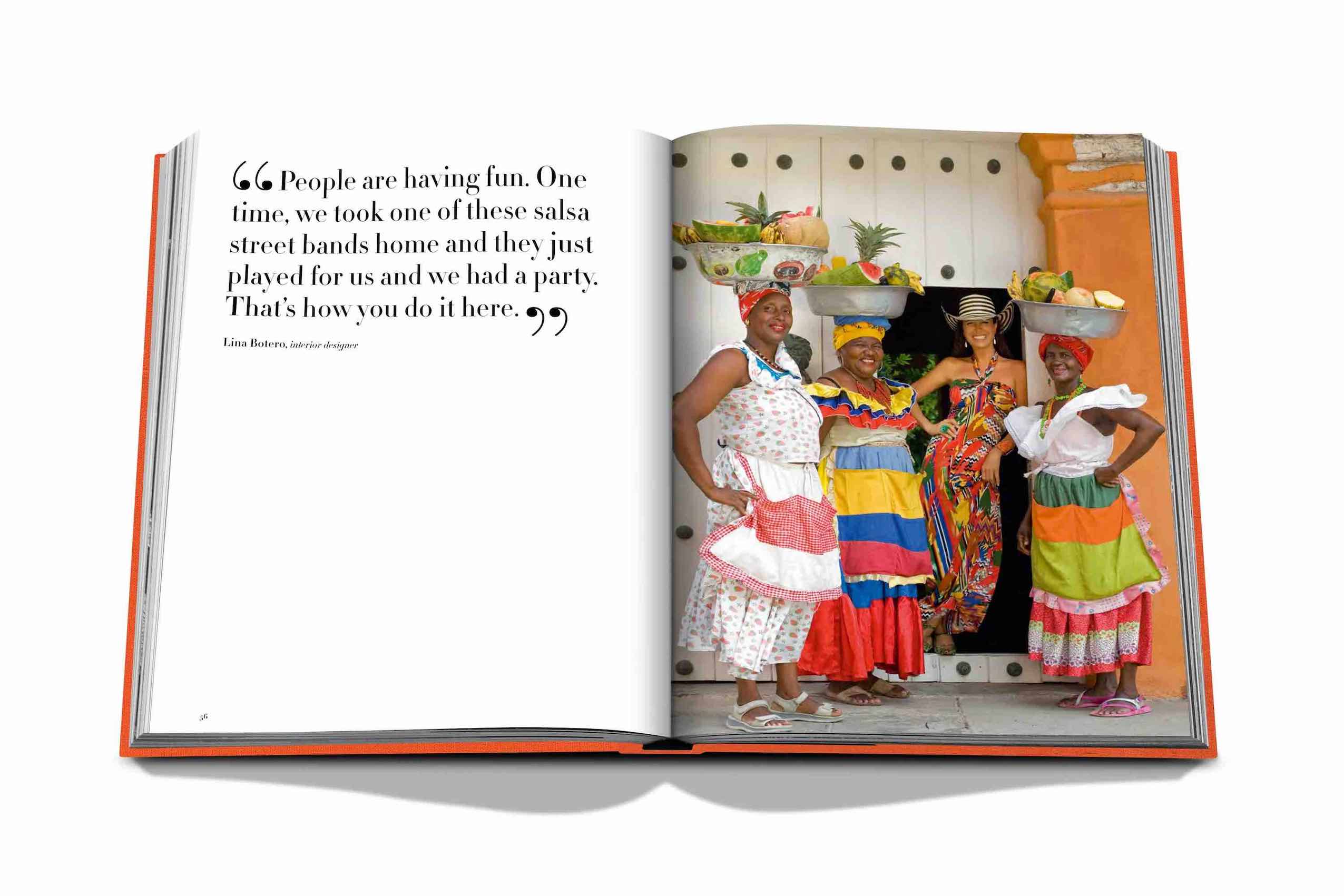
Even when brands do pay the artisans fairly and under contract this image and language colonialism is still rampant. As a communications professional myself I am still trying to figure out how to best communicate actual co-creations. I have fallen too into the colonial manners of doing crafts videos with a narrative designed by us, the brand, and not by them.
I no longer think I should design the narrative. Craftspeople and BIPOC designers should have the power to decide whether they want to appear on brand communications, how, and be compensated for their time. If anything, as communications professionals, we should just facilitate the space for them to create their narratives, podcasts, photos, or videos.
Pollution is Colonialism
Have you ever wondered where your garbage goes or what happens to the clothes you no longer wear and throw out? I bet you never pictured piles over piles of clothes contaminating marginalized neighborhoods in your own country or better yet in traditionally pillaged countries in the Global South.
I used to think clothing donation was a good thing, especially since when we were kids we donated our used garments directly to families my parents knew.
As a newly appointed Sustainability Director for a footwear brand, in 2019, I naively thought that helping customers donate their old shoes would be a great solution for the end of-life of our products. And even though it is not a terrible solution, it certainly is not the end all be all.
I learned through Open Edu that being encouraged to donate without enough traceability meant I was a part of the problem too. I was adding to making countries like mine landfills for the well-off people and brands of the Global North.
How is this colonialism, you may ask. Think about it like this: as a kid when I played with my toys my mom would be adamant about the fact that if I made the mess, I should clean it up.
Brands are not being held responsible for the mess they make. Instead, they are making the people and land of the global south pick it up for them.
First, brands take resources and cheap labor from said countries. Then, when people like us (I am a recovering fast fashion buyer too) get bored of our clothes, we either throw them out or donate them. But we never once stop to think about the energy, resources, hands, and time that went into making the garment we are throwing out, let alone what happens to them next.
We have been brainwashed into lowering the value of what we wear, into thinking our clothes are disposable, and into thinking that buying new things will make us happy, and make us feel like we belong. Indeed, 9% of shoppers in the UK bought something just to wear once on social media.
Returns create 5.8 billion pounds of waste in the US over one year. And, on average fast fashion buyers purchase 68 items a year and the US is the biggest fast fashion consumer, after China.
The people who make said garments barely make a living and now their countries have to pay to clean up the mess the Global North makes. They are the ones suffering from diseases due to water contamination, and general pollution, not the people who wear and landfill the clothes.

One such place is Kantamanto, in Ghana, a place where the fashion industry has shipped its discarded items, mainly from Europe, the US, and Canada. There they arrive in bales that Kantamanto retailers must buy without knowing whether what comes inside are quality resellable clothes or disposable pieces. Most of them get indebted to do this, which is why “less than twenty percent of retailers in Kantamanto make a net profit on an average bale.”

And now the brands want to buy back that waste for cheap, after BIPOC marginalized people have literally damaged their backs carrying and sorting it. Such brands want us to applaud their efforts, but this is circular economy greenwashing. They should instead work with the people in the secondhand clothing trade, pay them living wages to sort through piles of clothes discarded every couple of days, employ the upcyclers of the community, and stop landfilling and burning their overstock.
Examples of this greenwashing are how H&M claims to be advancing circular fashion because of their take-back recycling program and yet keeps producing at a massive scale and underpaying their garment workers. Another one is SHEIN, even though they churn out at least 6000 new styles daily, they claim they are going towards a circular economy because they are economically supporting the OR foundation. Even though the work of the OR is extremely necessary and giants like SHEIN should be putting their money where their mouth is, doing so does not make them sustainable.
Decolonizing Fashion: What is Decolonization?
Decolonization is sometimes used as a synonym for decentralizing whiteness from our systems. Its actual meaning is to give back stolen land to indigenous and Afro-Indigenous people. This is important, in the context of fashion, for a myriad of reasons.
Firstly, because there would be no clothes if it weren’t for our land. The cotton that’s on your denim jeans is grown on it, the cows that make up the leather on your boots live off the land, and even the oil that makes up polyester is extracted from the land. Secondly, it is the extractivist and transactional relationship the colonial powers brought with the land which got us into this mess in the first place.
Giving land back to indigenous people is not only what’s fair, but it is also positive for all of us. BIPOC folk were and have always been land stewards, the original sustainability experts, even if they are rarely credited for it.

Decentralize Sustainability
Indeed, colonization also shows up in the spaces which, in theory, should be questioning it. Sustainable fashion media, famous panels, and overall spaces are filled with white or white-passing people like me.
Not only that, they are filled with brand CEOs, designers, marketing execs, psychologists but rarely garment workers or farmers. People from whom the concepts and practices of sustainability were taken are not usually mentioned or invited to the table.
And yet, there are examples like The Root, where Dominique Drakeford, Nikki Sánchez, and Lisa Betty illuminate us on how black and indigenous people have always been at the forefront of all the practices we now advocate for to fix the fashion industry.
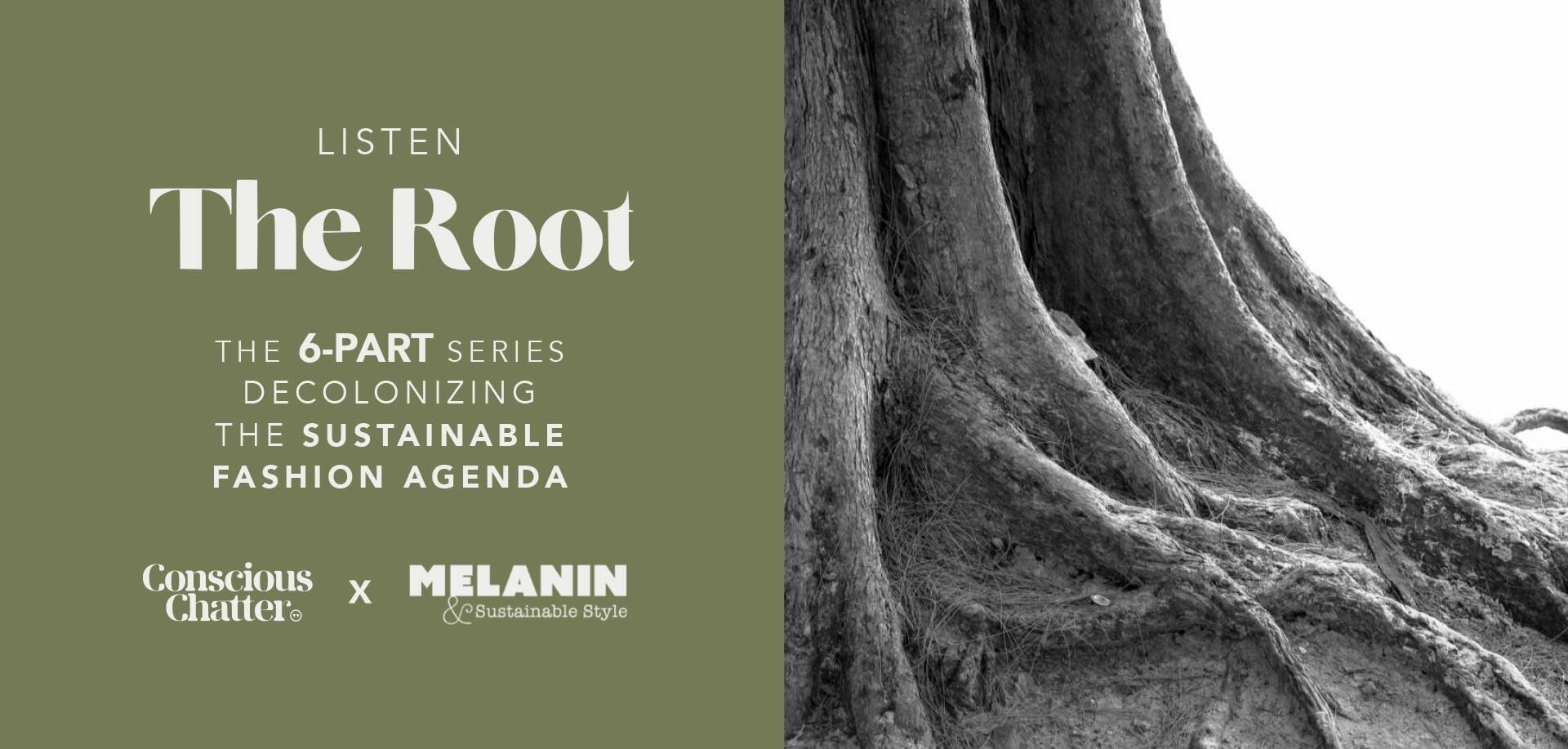
It was, according to them, BIPOC people with their brilliant farmers, engineers, fashion designers, philosophers, etc., who lived under the regenerative governing systems that we are trying to go back to.
What we now call regenerative agriculture was a resistance technique that black enslaved folk used to gain food sovereignty. Since they could not own land, they did guerilla crops: where they farmed within forests and foraged within an ecosystem already in existence. They also made provision crops, dedicated to food, with the local seeds they hid in their hair, things like root vegetables or jam.
These alternatives were happening amongst the most oppressive of systems. Black and indigenous people were thriving, and reappropriating the elements that were used against them.
What we see as circular economy, regenerative thinking, and the ecological and social positive impact of sustainable institutions today, was all their doing, their intergenerational resistance to colonial power.
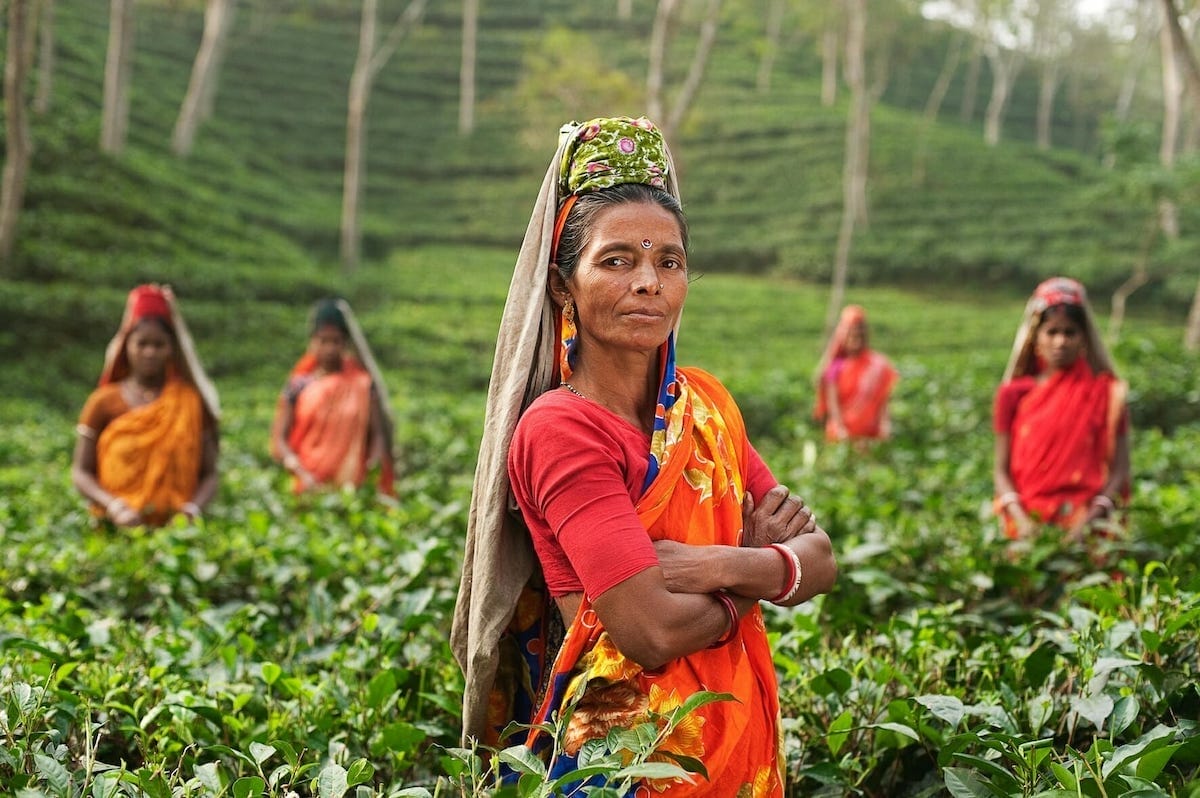
In terms of human rights, in fact, all the pillars of what the United States democracy is characterized by were already existing in Iroquois structures. Elements like women’s rights, freedom of speech, protection of our home, or leadership by consensus were ancestral.
Concepts like that of durability were also Iroquois. They had this practice that everything had to be thought to have a positive impact on the next 7 generations. The items crafted by indigenous people such as them are meant to last and be inherited, and with them, their culture and relationship to the land.
So if we want to find a way out of our climate and social emergency we must listen to the BIPOC experts, creators, and elders.
How Can You be Part of the Solution?
As a normal citizen and fashion lover you must be wondering, what can I do to be a part of the solution?
For one, figure out whose land you are on. I, for example, am writing from Bogotá, Colombia’s capital, which is the territory of mainly Muisca indigenous people, aside from other independent tribes like the Iraca or Sugamuxi, Tundama, and Guanentá.
Second, you can support public policy or grassroots efforts to actually give the land back to the Afro-Indigenous folk in your community. Call your representatives, donate your time to the cause, or if you have means, give money.
Third, you can decenter fashion consumption. Support local BIPOC designers and artisans directly. They are not just the suppliers, they are the designers, the makers, the philosophers, the scientists, and the farmers that make your clothes.
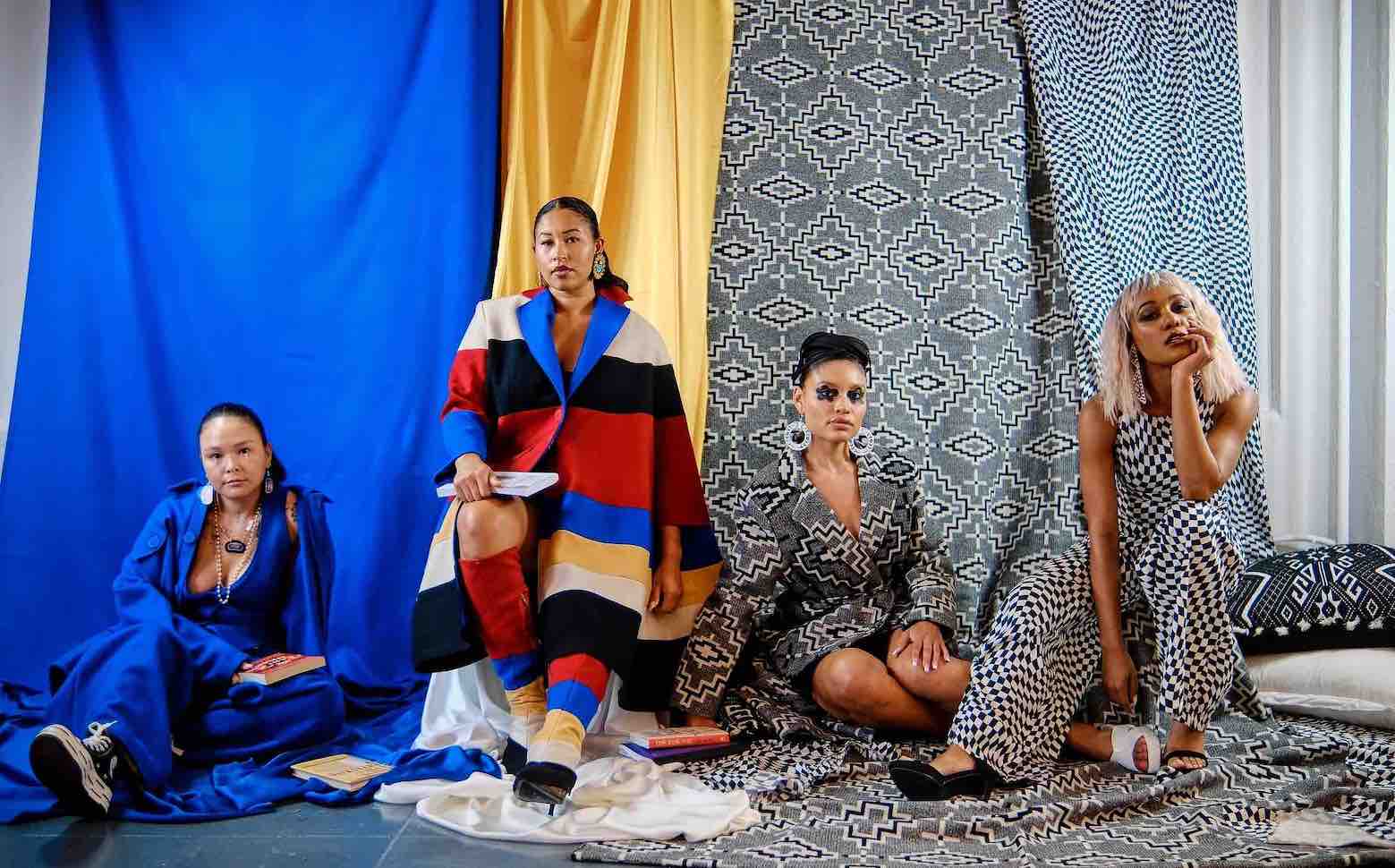
Some examples of indigenous designers and brands are Korina Emmerich, Keri Ataumbi, Orenda Tribe, and Estiven Castro Vásquez, just to name a few. Some black designers, brands, and collectives are Fibre Shed, Hope for Flowers, Lia Samantha, and Miss Balanta. Check out our brand directory for BIPOC owned sustainable fashion brands.
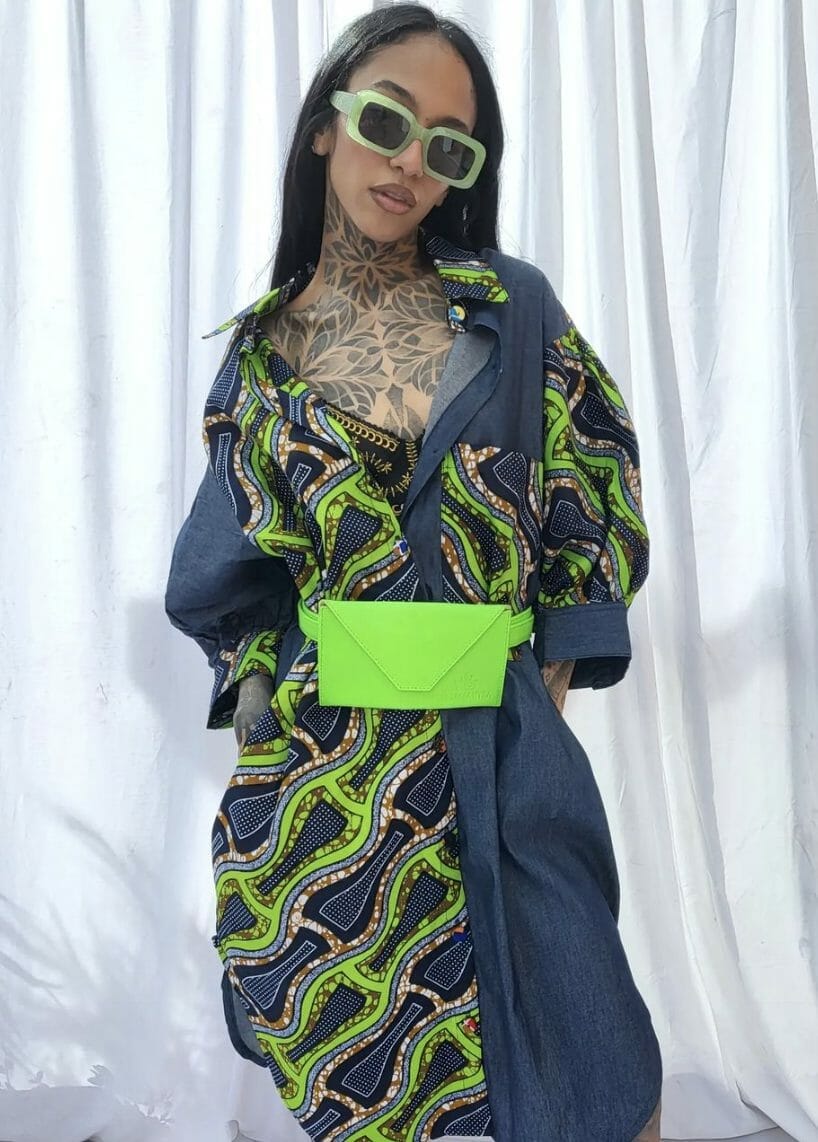
Decenter fashion media consumption too. There are a myriad of amazing BIPOC creators and activists in the space. Starting with the founder of the Sustainable Fashion Forum, Brittany Sierra; Dominique Drakeford, founder of educational hub Sustainable Brooklyn; Leah Thomas, Intersectional Environmentalist or Antiracist Afro feminist writer Carolina Rodriguez. There’s also indigenous fashion writer, Christian Allaire and educator Dr Adrianne Keene, among others.
Listen and uplift BIPOC voices in every space you are a part of: media, fashion, culture, science, architecture, entrepreneurship. The Root is one such example where Dominique Drakeford worked with Kestrel Jenkins to interview other indigenous and black experts on the systemic issues of the fashion industry.
Fourth, learn from them how colonization has and still is affecting your community and pay them for your knowledge. Aja Barber, for example, has a Patreon where she shares exclusive content, and you can donate to Open Edu.

Fifth, buy less, buy better, and love your clothes for longer. Let the teachings of indigenous generational craft inspire you to learn to mend and take care of what you already have and to share it with your loved ones. It is said that in order to keep with social and climate limits we should only buy 5 new items of clothing a year.
But above all else, question your own position in the system. What power do you hold? What privileges have you had? What oppressions are you under? And how can you use the power you do have to build a better future for all living and non-sentient beings where colonization no longer manages the design of our lives and our clothes?
Let’s design an equitable future together!

Adela is a Colombian storyteller, content maker, strategy consultant, & event producer, specializing in sustainable fashion, mental health, and gender issues.










2 thoughts on “Fashion and Colonialism: Let’s talk waste colonialism, fast fashion and decolonizing fashion”
Excellent article! I am inspired to do good from reading this.
Thank you! We’re glad you’re here 🙂